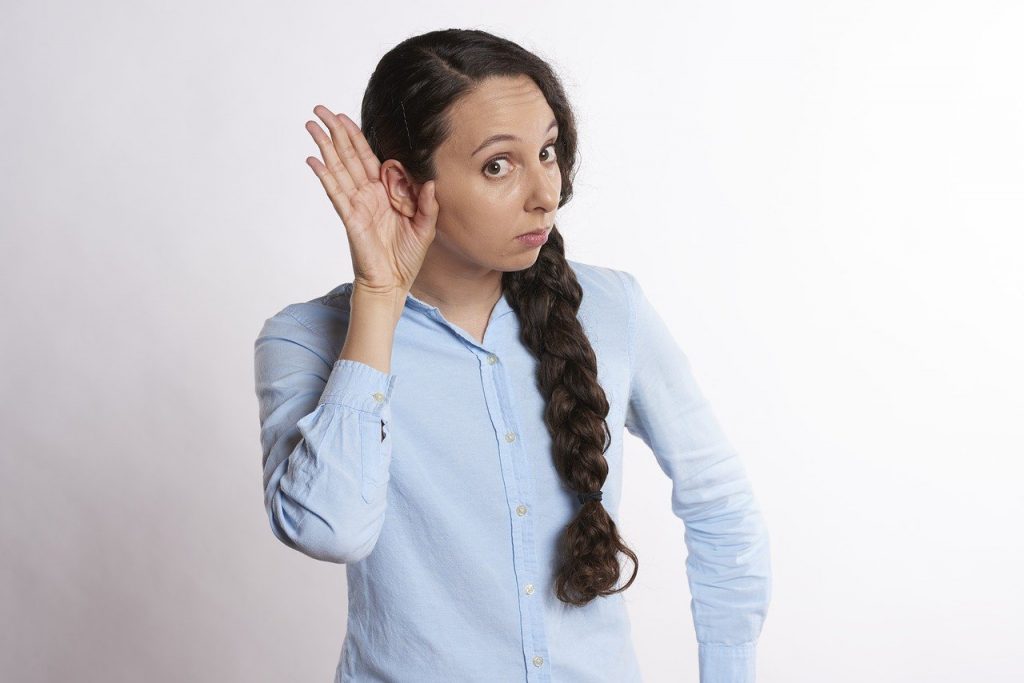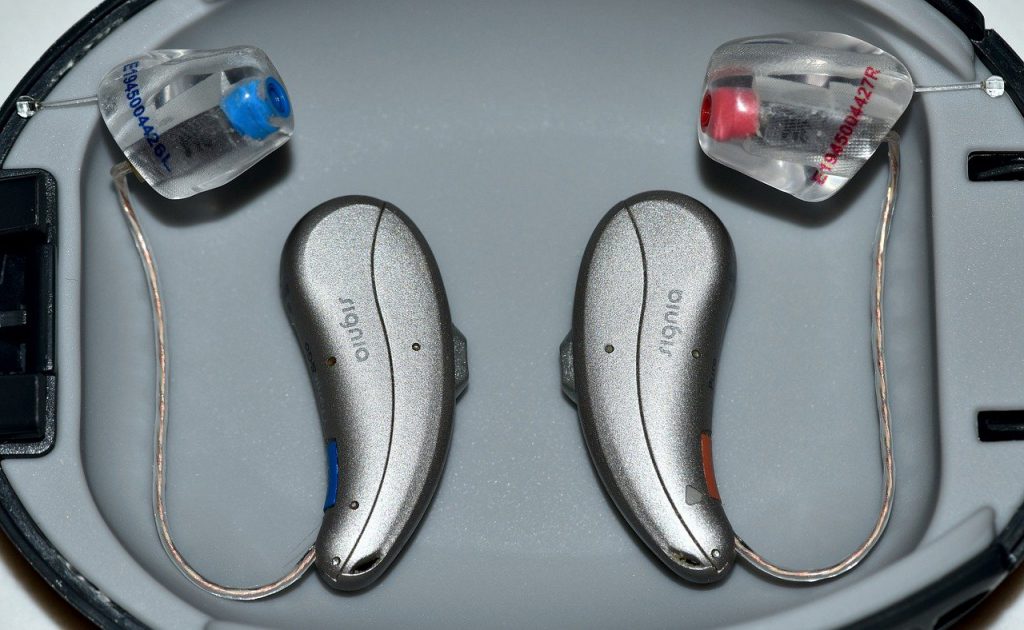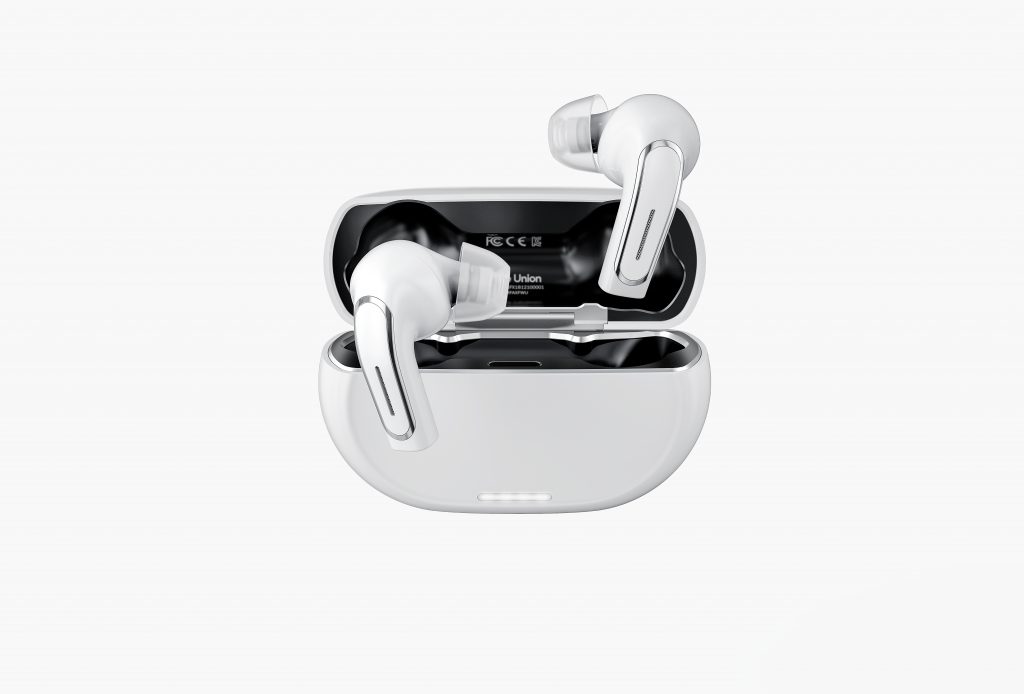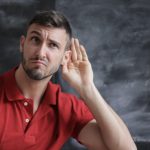
This article has been audited and reviewed by Dr. Ben Thompson, an audiologist and tinnitus expert. For more information about Dr. Thompson, click his name or read his bio below the article!
Ever notice how you might hear better out of your left ear than your right ear, or vice versa? Maybe you prefer sitting to the left of someone when speaking with them, or using the right earbud when sharing earbuds with a friend?
If that’s the case, maybe you should read on and find out a little bit more about asymmetrical hearing loss.
Contents
What Is Asymmetrical Hearing Loss?
Asymmetric hearing loss is when an individual has disproportionate hearing loss in both ears, where one ear’s hearing loss is greater than the other.
To be diagnosed with this type of hearing loss, there must be a certain difference in severity between the two ears in a number of frequencies. More specifically, asymmetrical sensorineural hearing loss (ASNHL) is defined as a binaural difference in bone conduction thresholds of >10 dB at two consecutive frequencies or >15 dB at one frequency.
Like hearing loss in general, it is common amongst the older population and can be a symptom of various underlying conditions such as an immune disorder or demyelinating disease.
Is It The Same As One Ear Hearing Loss?

Asymmetrical hearing loss is not quite the same as unilateral (one ear) hearing loss.
When we talk about one ear hearing loss, we assume that hearing loss occurs in one ear but that the other ear is unaffected and healthy. We have a “good” and “bad” ear.
With asymmetrical hearing loss, it can only affect those with bilateral hearing loss (hearing loss in both ears). Although there is a degree of hearing loss in both ears, one ear is a lot worse than the other. We have a “bad” and “worse” ear.
It is easy to think of it in terms of one ear hearing loss is a unilateral hearing loss, whereas asymmetrical hearing loss must be a bilateral hearing loss.
Asymmetric hearing loss can be further broken down into sensorineural hearing loss (ASNHL), conductive hearing loss, or mixed hearing loss.
Asymmetrical Hearing Loss Causes
If you’re aware of some of the causes of hearing loss in general, or bilateral sensorineural hearing loss, you’ll know some contributing factors to asymmetrical hearing loss.
Common causes include:
- Loud noise (this can be an asymmetrical exposure, for example, if you have frequently used noisy equipment and tools on one side of your body)
- Aging
- Genetic causes
- Injuries to the head or the ear
- Certain ototoxic drugs
- Acoustic neuroma or other tumors (pushing on the hearing nerve which will cause a faster decline in hearing in the affected ear)
- Surgery
- Repeated infections
- Viral infection on the hearing nerve
- Ménière’s disease
ASNHL might be the only noticeable symptom of a tumor on the hearing nerve, also called a vestibular schwannoma.
Keep in mind that dual pathology is common in instances of sensorineural hearing loss, and any asymmetry might be evidence of another factor or condition that has caused a greater loss in the worse ear. Your audiologist should be aware of this and conduct thorough tests to ensure nothing is missed.
It is important to report all other symptoms such as tinnitus, aural fullness, vertigo, imbalance, otalgia, and otorrhoea as well as your history of ear problems, surgeries, medication use (particularly aminoglycosides, nonsteroidal anti-inflammatory agents, salicylates, and chemotherapy drugs).
Knowing your family’s history of hearing loss can also be useful.
Identifying Asymmetrical Hearing Loss
Hearing loss is a change in physiology, and while much of your hearing loss might show up on an audiogram, a lot of it may not.
To diagnose your hearing loss, a hearing health professional or audiologist will need to conduct a thorough medical examination.
They will check the auricle (skin lesions, preauricular sinuses, oedema, erythema, and tragal tenderness), external auditory canals (mass lesion, discharge), and tympanic membranes (color, thickness, scarring, effusion).
The head and neck, cranial nerves, and postnasal space might also be examined. This includes detailed diagnostic imaging (MRI) to determine aetiology, and in some cases, blood test.
An audiology investigation might also be necessary. You should be referred to an ear, nose, and throat doctor (ENT) for further assessments, as there could be multiple factors at play. This referral will definitely happen, and fast, if you have any neurological symptoms.
How your asymmetrical hearing loss is treated will depend on the results from these tests.
Treatments for Asymmetrical Hearing Loss

Even after a diagnosis of ASNHL, you should still minimize your exposure to loud noise to prevent further hearing decline.
Your audiologist might advise the use of hearing aids to improve your hearing capacity. You will be able to decide as to whether you want to use two hearing aids or just one. Although for some people one hearing aid for their worse ear is enough, if you have hearing loss in both ears it is recommended to get hearing aids for both ears.
Just as your ears are designed to work together to allow your brain to combine input from both sides, CROS and BiCROS hearing aids are designed to replicate that.
While the cost of two hearing aids can be steep, your hearing will probably be much better with two hearing aids. Plus, the hearing in your ‘better’ ear will be more effectively preserved with the use of a hearing aid. This is due to a phenomenon called auditory deprivation, which takes place due to untreated hearing loss.
You can also consider serial fittings. Serial fittings are when one hearing aid is fitted first and then the second hearing aid is added later. This helps you to determine which ear is benefitting from the amplification and whether both are.
Some hearing aids use advanced features such as binaural communication to ‘talk’ to each other which can be useful in improving localization. This is another thing to consider when deciding whether to get one or two hearing aids.
Everyone’s hearing loss is different, so it’s difficult to say what will be the best course of treatment for you. Always listen to your audiologist’s expert advice when dealing with the tricky nuances of hearing loss and its treatment.
To learn more about the different types of hearing loss, check out our other blog articles.
Article edited by Dr. Ben Thompson – Au.D. (Audiologist)

Dr. Ben Thompson is an audiologist and tinnitus expert. Dr. Thompson is the founder of Treblehealth.com. He completed his residency at University of California at San Francisco (UCSF) and is a past board member of the California Academy of Audiology.
Via telehealth, Dr. Thompson provides tinnitus retraining therapy online. He hosts a YouTube channel, podcast, and tinnitus group coaching program to help individuals with hearing loss and tinnitus.
The information in this guide has been written using the following reliable sources:
https://www.audiologyonline.com, https://www.wsh.nhs.uk, https://www.hear-it.org, https://www.dallasear.com, https://www.longdom.org









